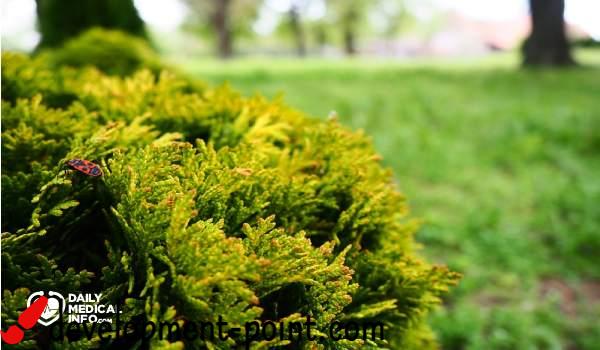The 13 most important methods used in the treatment of facial pigmentation
The term hyperpigmentation is used to describe dark spots on the skin, which are caused by the body producing an excess amount of melanin, which can occur due to several reasons, including acne scars, sun damage, or hormonal fluctuations. This disease is a common skin condition and in this article we will talk about the different available treatment methods for facial pigmentation.
What is the best treatment for facial pigmentation?
Many procedures can help treat facial skin pigmentation, and the doctor depends on the patient’s medical history of facial pigmentation in treatment. To determine the cause of pigmentation and thus find the best treatment for it.
1. Laser treatment of facial pigmentation
Laser treatment uses focused light beams to reduce pigmentation. There are two types of laser beams:
- Ablative lasers: It is the most intense, and works to remove layers of skin, and this type is the strongest, but it may cause greater side effects.
- Non-ablative lasers: which target the dermis (dermis); To promote the growth of collagen, and its tightening effects.
Both types destroy skin elements; To ensure the growth of new, more toned and firmer skin cells.
2. Treating facial pigmentation with creams
There are some over-the-counter creams that work with selected ingredients to help reduce pigmentation, and the creams are usually applied once or twice a day to help ease skin conditions over time.
The most common ingredients found in over-the-counter creams are:
- Licorice extract.
- N-acetylglucosamine.
- Vitamin B3 (Niacinamide).
Retinoid creams can also be used to treat facial pigmentation, and they are derived from vitamin A. Retinoids are among the oldest ingredients used for skin care, as these compounds have the ability to penetrate the skin and treat the layers below the skin.
3. Treatment of facial pigmentation with acids
Dermatological acids work by exfoliating or sloughing off the top layer of the epidermis, which helps in the emergence of new skin cells to replace the old ones. This process helps change and unify skin tone and make it smoother in general.
Common choices for acids include:
- Alpha hydroxy acids, such as glycolic, lactic, citric, malic or tartaric acid.
- Azelaic acid.
- Kojic acid.
- Salicylic acid or salicylic acid.
- Vitamin C (in the form of L-ascorbic acid)
However, you must be careful, when using products that contain high concentrations of the previous acids, the body may experience serious side effects. Therefore, it is preferable to search for products that contain 10% of acids or less.
4. Treating facial pigmentation with chemical peeling
Chemical peels use acids in stronger concentrations to treat affected areas of the skin, reducing the appearance of hyperpigmentation by removing the affected skin.
Possible risks when using a chemical peel include:
- flushing
- irritability
- Blisters (pills) or scars develop.
And in the event that you are exposed to the sun on a regular basis, chemical peels may not be the best treatment option for you. Chemical peels may cause your skin to be more sensitive to sunlight, so sunscreen should be used adequately. For UV protection.
Treating facial pigmentation naturally
There are several ways you can treat hyperpigmentation on the face at home, including the following:
1. Apple vinegar
Apple cider vinegar contains acetic acid, which may reduce pigmentation, which helps treat facial pigmentation. It can be used as follows:
- Mix an equal amount of apple cider vinegar and water in a container.
- Apply the mixture on the darkened skin patches and leave it on for two to three minutes.
- Rinse the areas using lukewarm water.
- repeat twice daily; to achieve the best results.
2. Aloe vera
Aloe vera contains aloin, a natural compound that has been shown to lighten skin pigmentation and work effectively to treat hyperpigmentation. It can be used as follows:
- Apply pure aloe vera gel to the pigmentation areas before bedtime.
- Rinse the areas using warm water the next morning.
- Repeat daily to improve your skin tone.
3. Red onion
Red onion extract (Allium cepa) is an ingredient in some of the creams available to treat pigmentation on the face. Research has found that dried skin from red onion can lighten skin pigmentation effectively.
4. Green tea
Green tea extract has an effective skin lightening effect when applied to the skin, and it can be used by following these steps:
- Steep a green tea bag in boiling water for three to five minutes.
- Remove the tea bag from the water and allow it to cool. So as not to burn your skin.
- Rub the tea bag over the dark spots.
- Repeat twice a day until you get the desired results.
5. Black tea water
One animal study found that black tea water lightened dark spots on the skin when it was applied twice a day, six days a week for four weeks.
How to use at home includes:
- Add 1 tablespoon of fresh black tea leaves to a cup of boiling water.
- Soak it for two hours and then filter it.
- Soak a cotton ball in the tea water, then apply it to the hyperpigmented areas, twice a day.
- Repeat every day for six days a week, over the course of four weeks.
6. Licorice
Licorice extract contains active ingredients that have been shown to lighten hyperpigmentation caused by sun exposure. Some topical creams used to treat facial pigmentation contain licorice extract, so use it as directed on the package.
7. Milk
It has been proven that milk (yoghurt), or sour milk, may effectively reduce pigmentation and discoloration of the skin. Milk contains lactic acid, which is the component responsible for this effect.
It can be used to treat facial pigmentation as follows:
- Soak a cotton swab in the milk.
- Rub it over pigmented skin spots twice a day.
- Repeat daily; To see effective results.
8. Orchid
Orchid flower extract is effective in treating skin pigmentation. Because it contains vitamin C, according to some studies, applying this extract to skin spots for eight weeks improves them in terms of size and appearance.
You can buy products that contain orchid extracts, such as creams, and use them as directed on the package. For best results.
9. Red lentils
Red lentil face masks are popular as a treatment for hyperpigmentation; This is because red lentils contain antioxidants known to be good for the skin and face.
Here are the steps to making your own face mask:
- Soak 50 grams of red lentils overnight in a bowl of water.
- Use a food blender to make a fine paste out of the lentils.
- Apply the paste evenly on the face and leave it for 20 minutes.
- Rinse your face and skin with cool water, then pat dry with a towel.
Treatment of facial pigmentation with herbs
Herbs can treat deep skin pigmentation; This is because they contain many beneficial elements for the human body, and some herbs include the following:
- Chamomile Chamomile.
- Licorice.
- Peppermint.
- Turmeric.
- Cinnamon.
- Saffron.

